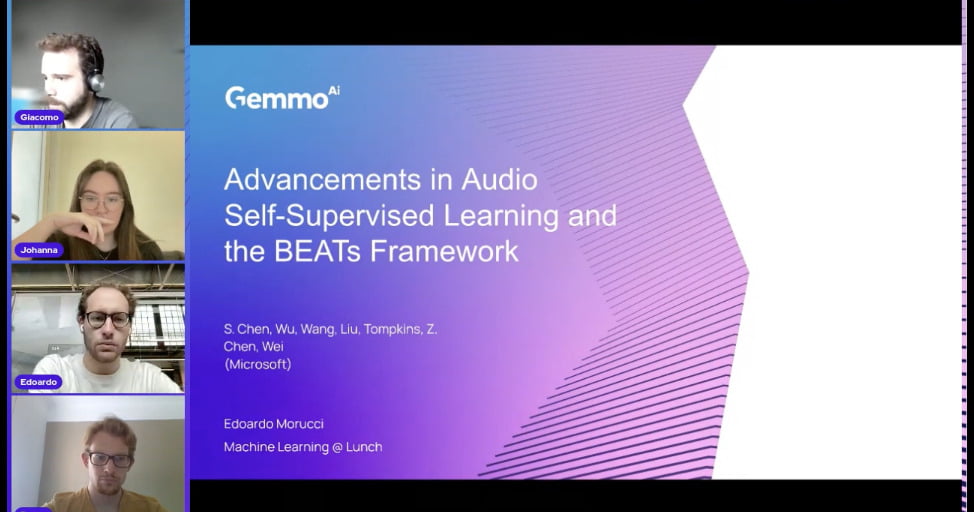AI Value Matrix
What is the AI Value Matrix? It assesses the skills required to complete a task and the usefulness of that task. It evaluates what humans can do and cannot do and AI tries to generate solutions to fill and fix thos...

What is the AI Value Matrix?
It assesses the skills required to complete a task and the usefulness of that task.
It evaluates what humans can do and cannot do and AI tries to generate solutions to fill and fix those gaps.
“It predicts where the value is.”
A quick example of a practical solution in which the AI value matrix tool could be useful is for application development and workflows. AI can be used for timeline tracking and prediction, looking at possible performance. It can also be useful to allocate tasks by using automatic task allocation. AI could also be useful for automated issue tracking, such as providing statistics of how many people touched the issue, how long each person had the assigned issue, and time it took from beginning to end to complete the issue. It can automatically track every stage and automate email sends.
Why Use the AI Value Matrix Tool?
Those who have a need to streamline tasks, save costs, or wish to improve process efficiencies should consider using the AI Value Matrix Tool to prioritize or discover a use case. The first step is to discover a use case that you would like to use AI for and the second step is to prioritize what’s important for using AI in your business.
For example, maybe you have a project and you have an intention, an aspiration, or a need to integrate AI in a current product. The AI Value Matrix helps you understand where the value is that AI can unlock. Thus, this AI Value Matrix Tool is used at the ‘discover’ phase—the project planning stage to save time.
What is the AI Value Matrix Tool?
At the core, the AI Value Matrix Tool is about studying value in relation to two variables: usefulness and skill.
For example, driving a car is a skill, and another skill is guiding a missile to hit its target, which with the advancements of technology, this is handled by AI. Thus, The Al Value Matrix is the combination of these two variables. The skill required in performing a task and the usefulness of that task when completed. The output, or ‘usefulness’ in this case for the car is, driving the car safely, transporting materials quickly, and arriving at a destination on time, and for the missile, the missile hitting its target. The value depends upon the combination of these two variables: usefulness and skill.
Thus, your objective could be to cut costs, to solve problems not easily done by humans, or to scale a certain process. This is all about product strategy.
How Does It Work?
The AI Matrix compares four quadrants worth of information: action, data, humans can do a task, and humans cannot do a task. These quadrants are T1, T2, T3, T4. These quadrants represent the various algorithms we can consider implementing in our business.
The green (T1) quadrant displays that there is more potential for the value of AI.
The red (T4) quadrant signifies there is not a lot of value in using AI for this task because it is mostly data related and handled quite well already by humans.
The orange (T2 and T3) quadrants also indicate there is value to use and implement AI, but it really depends on what you are hoping to achieve.
Thus, the AI matrix shows what tasks are skills-based and which tasks can be replicated by AI and which tasks cannot be replicated because they are too difficult. If an algorithm can take an action on behalf of a human, then it is very useful to use AI in these instances because potentially that can save time and costs.
For example, an action that a human can do is drive a car. Well, so can AI. Data that a human can do is label images. An action that a human cannot do is use anti-aircraft guided missile technology. (This is a high-stakes, high-value scenario.) Data that humans cannot do is micro emotion detection, which an algorithm could do.
How to Use the Tool?
First thing you want to do when you download this tool is:
Determine or focus the task. See example of tasks above, such as driving a car or guiding a missile.
Determine the skill, and in particular, is it something a human can perform or not?
Determine the output. What are you getting out of this? Data or action?
Place the use case in the right quadrant.
Keep adding use cases.
Adjust the position of the use cases in the matrix.
Prioritize by value (i.e., rank list of use cases). Assess what is your business goal. Is it to cut costs, solve new problems, or to scale your business? Take into account your objectives.
Who Should Use This Tool?
Product Managers
Project Managers
Head of Research
CTOs
Or those that are part of the discover and planning teams
Cut Costs & Solve New Problems
We can deploy AI in several ways with cutting costs and by solving new problems (i.e., things humans cannot do). Actions and Data entry/input that humans can do could be a potential way to cut costs by using the AI Value Matrix tool to see if an algorithm can perform the task instead, or even perform a portion of the task. We can also solve new problems by implementing AI and algorithms to do tasks (action and data) that humans cannot do.
The AI Matrix Tool creates opportunities within your business by:
a) scaling your business and
b) differentiating your business
Going Deeper – A Use Case Demonstration of the AI Value Matrix Tool
We have provided the following example of a use case in order to help visually guide you on how you can use the AI Matrix Tool to determine the usefulness and skills of certain tasks.
Use Case – AI for Cloud Computing
AI for Cloud Computing is an example of a use case that the AI Value Matrix tool can be used for to assess the value of AI for your business objectives. As an example, there are four use cases within Cloud Computing where we can determine where AI can help your business cut costs and solve problems.
UC1: ‘Group-wise incident analysis & prediction’ falls into quadrant T2, which shows there is more potential here to use AI.
UC2: ‘Smart provisioning’ falls in quadrant T3, indicating a good value in using AI. Smart provisioning can automatically shut off machines based on your usage pattern. Be care of companies who have a conflict of interests. They do so to increase their margins.
UC3: ‘Root-cause analysis’ is a medium-to-low value for using AI to complete this task, since it falls in quadrant T4, and it is something humans can do more easily with assessing the root-cause of a situation.
UC4: ‘anomaly detection’ shows there is value in using AI, and the task falls in quadrant T3.
As part of the example, In order to automate anomaly detection, your first step is to collect data. The logs require a timestamp and a date. The data will need to be parsed by extraction based on time and with the use of some smart rules. Then the log needs to be translated into a human readable log. Thus, the AI Matrix Tool uses a new format, called ‘feature matrix’. It is based on algebra matrices we learned in school, you know, the matrices with zeros and ones in a table. The matrix is basically in a binary/numerical format. Then you use it to train an algorithm to do the detection. The tool algorithm looks for either absence or presence of a pattern.
Machine learning algorithms work as follows: At every instance, it is predicting a value that is associated with the curve. Thus, it detects anomalies when something different occurs.
Then, we have to make an error prediction, and spikes appear on the screen to alert the human to do something or that someone is attempting to penetrate the firewall security.
An example of a company that developed this tool for cloud computing is Dynatrace. Also, Gemmo offers an AI Clinic, which includes Free AI Advice for a 20 minute consultation.
Conclusion
The AI Value Matrix tool can be used for security, cloud computing, and applications. AI features are most valuable and gained in security and cloud computing. Again, this is not an exhaustive list, but these are good examples that show value in using an AI Value Matrix.
Some questions to ask yourself as a business to move forward with AI is:
What does your Software Development Life Cycle look like?
Where can AI be embraced?
Where is it more challenging to take advantage of the benefits of AI?
The easiest places to implement AI are in maintenance and testing , design framework, and architecture.
Have you already identified areas where AI can be of value for your business?
77% have already identified used cases. The next step for you and your business is to take action or explore AI options. Where do you want to put your time, resources, and budget?
Check out a new tool called Amplitude offered by Gemmo to short-cut time needed to implement an end-to-end solution from design to employment.



